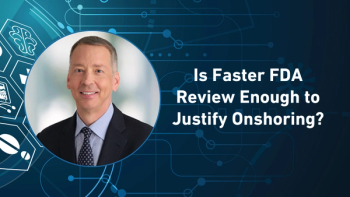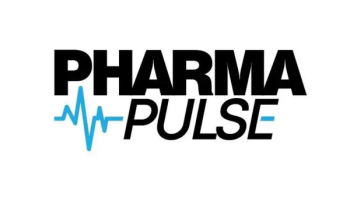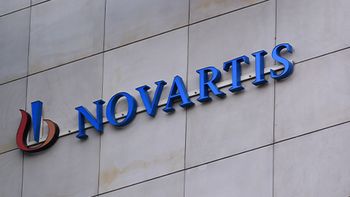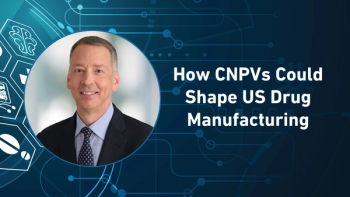
How Pharma Can Navigate Innovation and Cost Pressures in the GLP-1 Era
In the second part of his Pharma Commerce video interview, Philip Sclafani, PwC's pharmaceutical and life sciences lead, discusses how the pharmaceutical industry is balancing high-cost innovation, especially in obesity and metabolic disease, with payer demands for cost containment, highlighting the growing role of biosimilars and future generics in offsetting spend.
In a video interview with Pharma Commerce, Philip Sclafani, PwC's pharmaceutical and life sciences lead, he describes how the One Big Beautiful Bill Act (OBBBA) is expected to significantly influence prescription drug spending by reshaping access and reimbursement within Medicaid, certain Medicare segments, and ACA exchange plans. The OBBBA introduces pressure on pharmaceutical revenues, particularly by limiting coverage for high-cost drugs in publicly funded markets. This could reduce patient access to specialty medications and diminish pharma sales in those sectors.
Simultaneously, broader market forces are also impacting prescription drug trends. On the private commercial insurance side, cost inflators like the rapid growth of GLP-1s and behavioral health treatments are emerging, while biosimilars act as deflators. The intersection of these trends—OBBBA and private market shifts—presents a complex environment for pharmaceutical companies.
To mitigate financial risks and preserve innovation, pharma firms are being pushed to accelerate R&D investment and pursue mergers and acquisitions (M&A) that bring in near-term revenue and long-term pipeline potential. There’s also growing interest in global licensing deals, including accessing drug pipelines from China for US or ex-China markets.
At the operational level, companies are responding to tighter margins by improving efficiency—through digitization, AI integration, and reevaluating commercial spend, such as Salesforce deployment and direct-to-consumer marketing.
Overall, Sclafani emphasizes that OBBBA is just one factor within a larger industry shift, and successful pharma companies will need to respond holistically—balancing cost containment, innovation, and strategic partnerships to adapt to this evolving landscape.
He also comments on balancing the demand for innovation with increasing payer pressure to control costs; the role biosimilars play in long-term cost containment strategies; operational and pricing strategies pharma executives should prioritize in order to stay competitive while ensuring patient access and affordability; and much more.
A transcript of his conversation with PC can be found below.
PC: How can pharma balance the demand for innovation with the increasing payer pressure to control costs?
Sclafani: That is the balancing act that we're trying to achieve, and what I would say for years. We're at a point now where specialty medications make up, 2% of overall prescribing, but 50% of cost. There is no true generic of a biologic. We're starting to see biosimilars now become important and actually delivering cost savings as of last year, so that will help. What's historically happened is pharma has innovated and brought out new therapies that address unmet needs or raise the standard of care. Those small molecules grew to be big brands and then eventually, lost patent and generics came in and significantly—almost overnight—reduced the cost of those to pennies in some cases, and then the next round of innovation would go.
The machine ran that way for a while. Over the last two decades or so of biologics coming in, you have that continuing dynamic on the small molecule side, but then biologics were adding new costs to the system, and there really wasn't a generic. Many therapies have existed long past their patents expiring. I'd say that's one of the big factors now is biosimilars as a deflator.
The equivalent of generics on the small molecule side are beginning to meaningfully reduce the cost of those. If you were to extract out the growth of GLP-1s, and then just look at the rest of the market, it's actually pretty flat for pharmaceutical spend, going down because of the major biosimilar events last year. I think that's one big piece.
I think GLP-1s as a major driver, there’s probably two parts to it. One is a lot of is a utilization story. How many patients actually have insurance coverage for it and will get access to it, and how long will they stay on therapy that's driving a lot of the cost? In many regards, the net cost of these therapies is actually coming down over time as that access expands. That's probably the 100-billion-dollar question: how big will GLP-1s become? Big, I think, is the answer for most, but how many patients will have access to it, and what will that use look like?
I think the expectation is that will grow. There will even be small molecule. There will be generics of those, or generics/biosimilars of the GLP-1s coming, some of them are selected for IRA negotiation under Medicare that will reduce costs. I think part of is that balancing act and nothing new for health plans and insurance companies. As the prices come down a little bit, they can incrementally reduce some of the utilization management and expand access and coverage, and some of this also goes back to an employer choice to being willing to cover those therapies.
That’s kind of the near-term story. I think the longer-term story is, I don't think health insurers are interested in paying for patients to have a lower number on the scale—it's more about, does it improve overall healthcare, cardiovascular health, etc., and reduce costs? That's going to take some time to bear out. The tough trade-off is, do I pay for obesity and weight loss management now to see some of the broader medical and health plan cost savings later?
I think that’s the hope you'll see there, and eventually, that should catch up. And then the last piece I'll say is there are other areas in neurosciences, Alzheimer's, Parkinson's, depression, new treatments coming out as well that that will gain hold and eventually, incrementally increase costs, but again all part of that balancing act of some things are coming down from generics and biosimilars. There'll be new innovation that likely will cost more, but then should have some longer-term cost savings, especially in the case of GLP-1s. I think that's kind of the virtuous cycle we're watching for now.
Newsletter
Stay ahead in the life sciences industry with Pharmaceutical Commerce, the latest news, trends, and strategies in drug distribution, commercialization, and market access.





